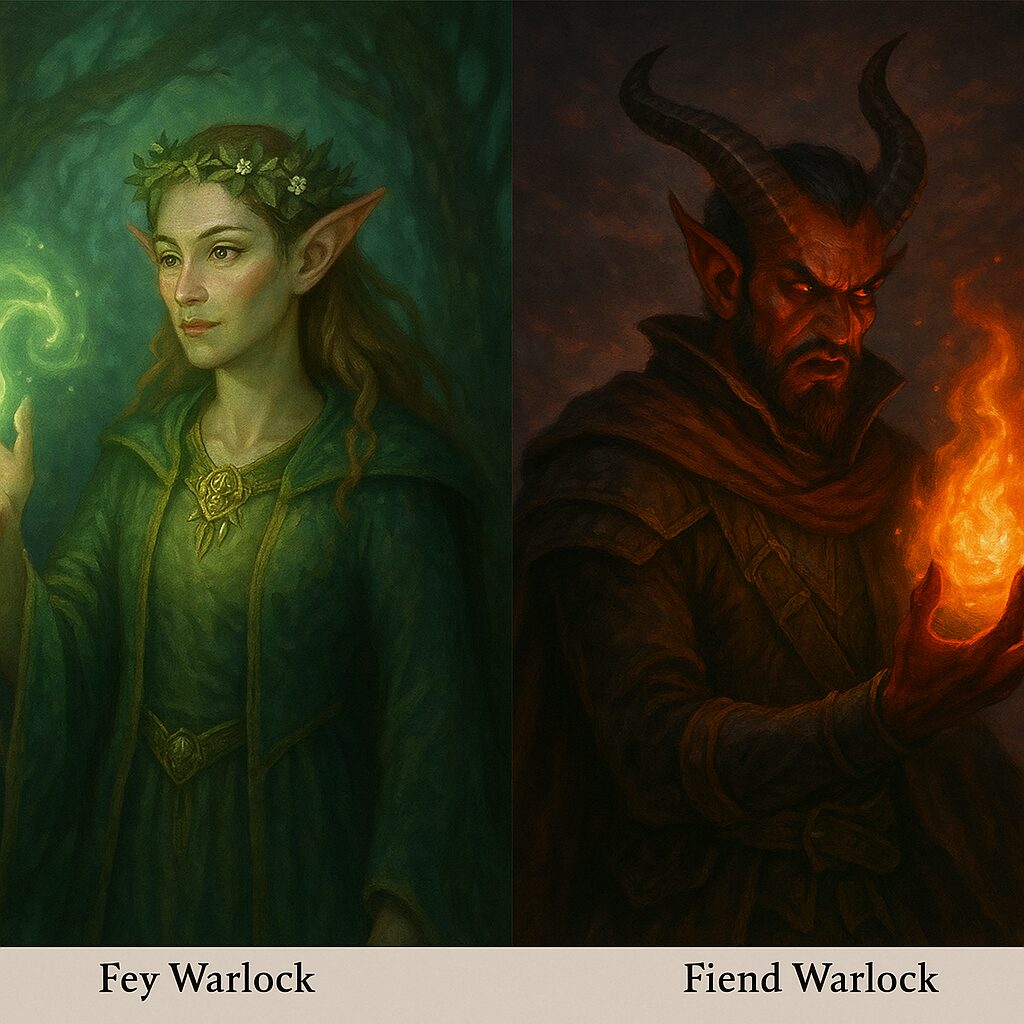
Innate Arcana Refined: Comparing the 2014 and 2024 Sorcerer Core Classes
The Sorcerer is D&D’s innate spellcaster—the font of raw magic, born of ancient bloodlines or mysterious phenomena. In the 2014 version, Sorcerers offered a unique spellcasting experience  centered around flexibility through Metamagic and Sorcery Points. But they were often criticized for feeling underwhelming next to Wizards or Warlocks, especially due to their limited spell list and slow feature progression. Want an in-depth discussion, check us out on Youtube. Or you can get more sorcerous fun here.
centered around flexibility through Metamagic and Sorcery Points. But they were often criticized for feeling underwhelming next to Wizards or Warlocks, especially due to their limited spell list and slow feature progression. Want an in-depth discussion, check us out on Youtube. Or you can get more sorcerous fun here.
The 2024 revision doesn’t completely rewrite the Sorcerer, but it does take meaningful steps to solve those issues. Let’s crack open the arcane genome and see how the Sorcerer has evolved.
1. Spellcasting: A Bigger Toolbox
2014:
-
Sorcerers learned a very limited number of spells known—fewer than Bards, Druids, or Clerics.
-
Spontaneous casting: no need to prepare spells, but no flexibility in swapping day to day.
-
Focused on Charisma as the spellcasting ability.
2024:
-
Sorcerers now learn more spells overall:
-
Slight increase in spells known at various levels.
-
Access to new utility and thematic spells baked into the core class spell list.
-
-
Still spontaneous casting, still based on Charisma.
-
Spell list is now more tailored but expanded, incorporating popular utility spells that were previously absent.
🧠 Takeaway: The 2024 Sorcerer has more arcane tools without losing its pick-and-commit identity.
2. Sorcery Points: Easier Access, Smoother Use
2014:
-
Sorcery Points started at level 2 and scaled with Sorcerer level.
-
Used for Metamagic and Converting spell slots (via Flexible Casting).
-
Had to balance use between Metamagic tricks and generating extra spell slots.
2024:
-
Sorcery Points now start at level 1, improving early-level usefulness.
-
Sorcery Points can still be used for Metamagic, but now include other optional class features (see below).
-
Flexible Casting remains, but is less emphasized in favor of stronger signature powers and new features.
🧠 Takeaway: You get to play with Sorcery Points from the start, and their uses are better integrated into the class.
3. Metamagic: More Available, More Impactful
2014:
-
Choose 2 Metamagic options at level 3, more at 10 and 17.
-
Cost Sorcery Points to use, offering effects like Extended Spell, Twinned Spell, Subtle Spell, etc.
2024:
-
Choose your first Metamagic at level 1 (a huge boost for low-level identity).
-
Gain additional Metamagics earlier (e.g., levels 1, 5, 9, 13, and 17).
-
Some underused options have been rebalanced or reworded for clarity.
-
Introduction of Metamagic Adept as an integrated feature, rather than a feat dependency.
🧠 Takeaway: Metamagic is now core to the Sorcerer from the beginning, encouraging magical customization right away.
4. Font of Magic: Now It Means Something
2014:
-
Font of Magic was mostly the umbrella term for Sorcery Points and Flexible Casting.
-
Not really a “feature” so much as a container for other mechanics.
2024:
-
Font of Magic now includes new Sorcerer-exclusive uses for Sorcery Points:
-
Empower Arcana: Spend points to reroll damage dice.
-
Arcane Rebound: Spend points to cast certain spells as reactions or bonuses (based on subclass and spell level).
-
Additional scaling utilities depending on your build path.
-
-
Makes the Sorcerer feel like they’re truly manipulating magic on the fly, not just tweaking existing spells.
🧠 Takeaway: Font of Magic is no longer just a label—it’s now a toolkit of arcane control.
5. Magical Burst: A Unique Identity at Last
2014:
-
Sorcerers often felt like “worse wizards” without an identity-defining mechanic.
-
They lacked area damage scaling or flashy control mechanics without subclass support.
2024:
-
Many Sorcerers now benefit from Magical Burst–style class features:
-
New damage-enhancing abilities tied to Sorcery Point expenditure.
-
Boosts area-of-effect spells or makes single-target spells feel punchier.
-
-
These tools give the Sorcerer an offensive edge, emphasizing their raw magic.
🧠 Takeaway: The 2024 Sorcerer now has mechanical bite to go with its narrative flair.
6. Capstone Feature: Epic Choice Instead of a Cookie-Cutter
2014:
-
The capstone ability at level 20 gave you Sorcery Points = 5 + Charisma mod at the start of each combat. Strong, but situational.
2024:
-
Level 20 now gives Sorcerers access to an Epic Boon.
-
Choose from a curated list of powerful endgame abilities (immunity to damage types, casting without components, bonus spells, etc.).
-
Allows Sorcerers to express high-level identity, not just pump out more Metamagic.
🧠 Takeaway: Sorcerers can now customize their apex power, rather than being locked into a generic bonus.
🎇 Side-by-Side Summary Table
| Feature | 2014 Sorcerer | 2024 Sorcerer |
|---|---|---|
| Spellcasting | Very limited known spells | Slightly expanded, more utility |
| Sorcery Points | Start at level 2 | Start at level 1, broader applications |
| Metamagic | Starts at level 3 | Starts at level 1, expanded over levels |
| Font of Magic | Just Flexible Casting | Includes new point-spend abilities |
| Offensive Identity | Subclass-dependent | Magical Burst-style features integrated |
| Capstone (Level 20) | 5 + CHA SP per combat | Player-selected Epic Boon |
✨ Final Thoughts: The Chaos Mage Refined
The 2024 Sorcerer doesn’t stray far from the original blueprint—but where the 2014 version felt constrained, the revised version offers expanded agency, earlier rewards, and a better power curve. The core mechanics like Metamagic and Sorcery Points are no longer gated behind mid-level play. And most importantly, the Sorcerer now has a stronger class identity rooted in raw magical force, rather than simply being the “spontaneous Wizard.”
This new version rewards creativity, flexibility, and a bit of chaotic flair—making the Sorcerer more exciting than ever to play, whether you’re casting with style or unleashing raw arcane fury.
Thanks for reading. Until Next Time, Stay Nerdy!!












No Comments